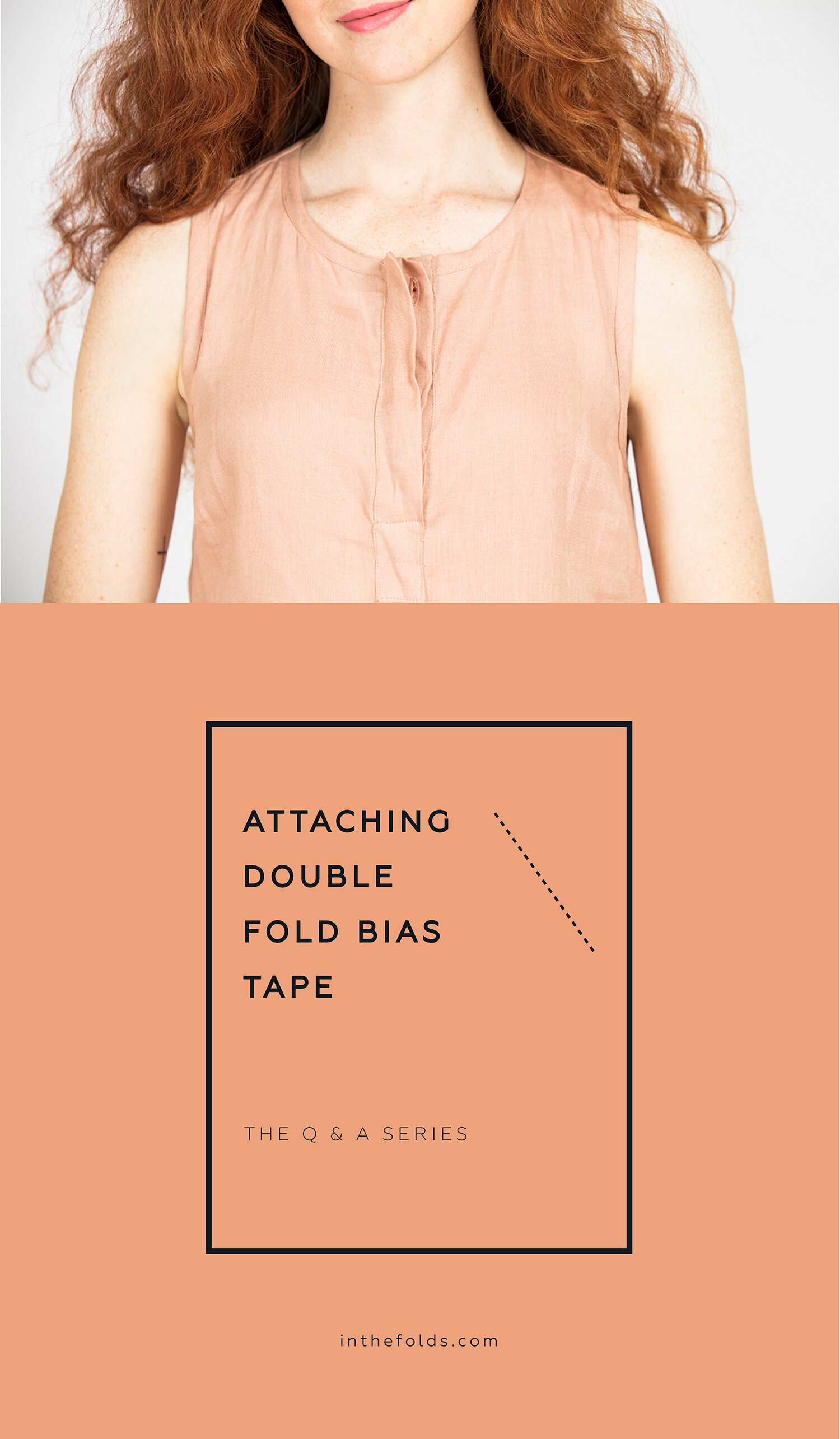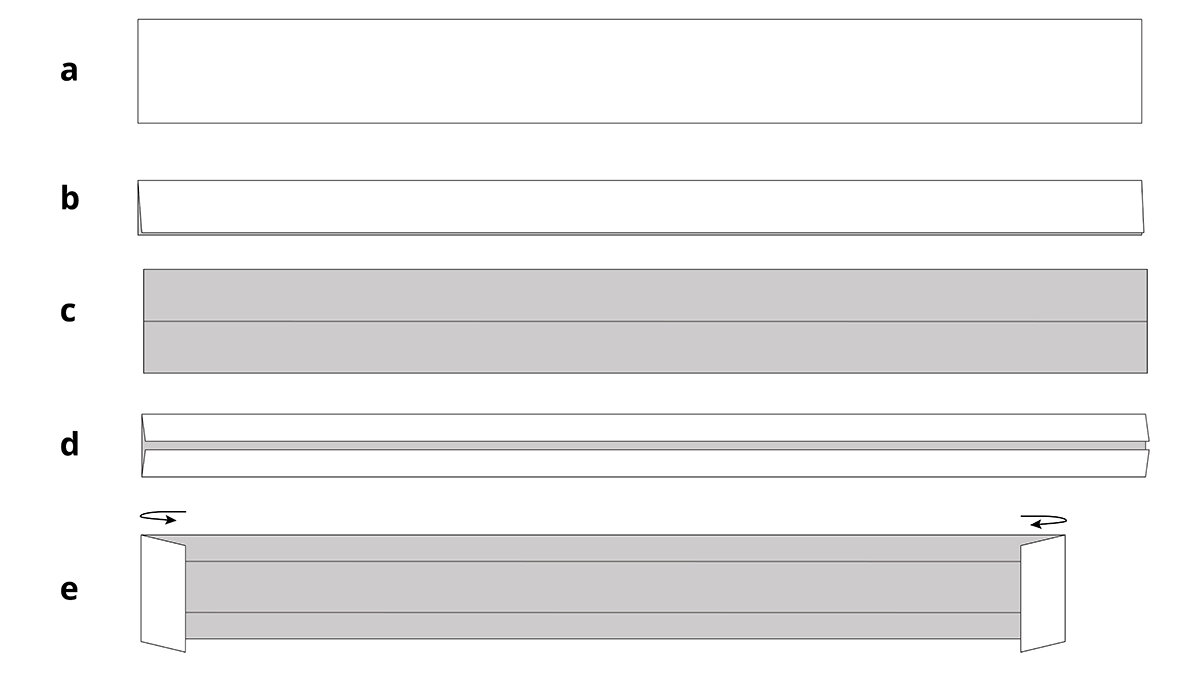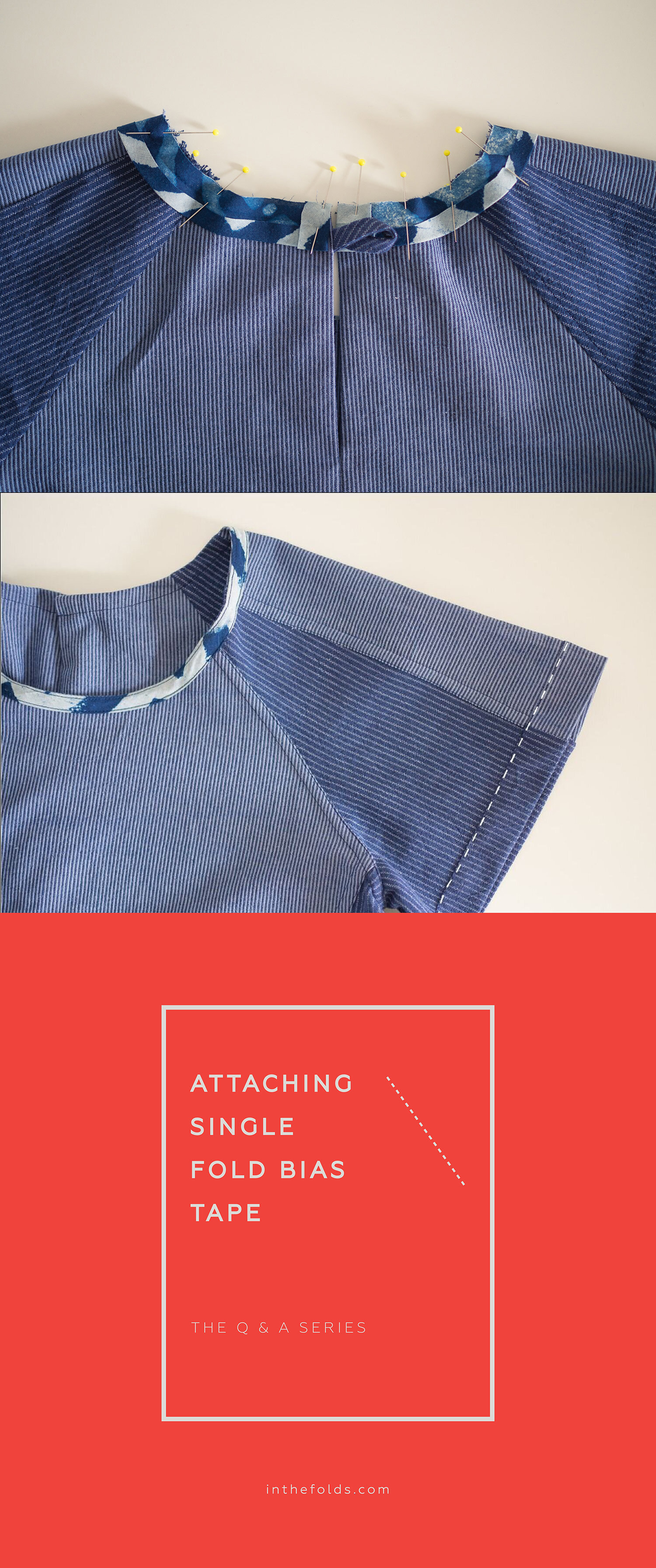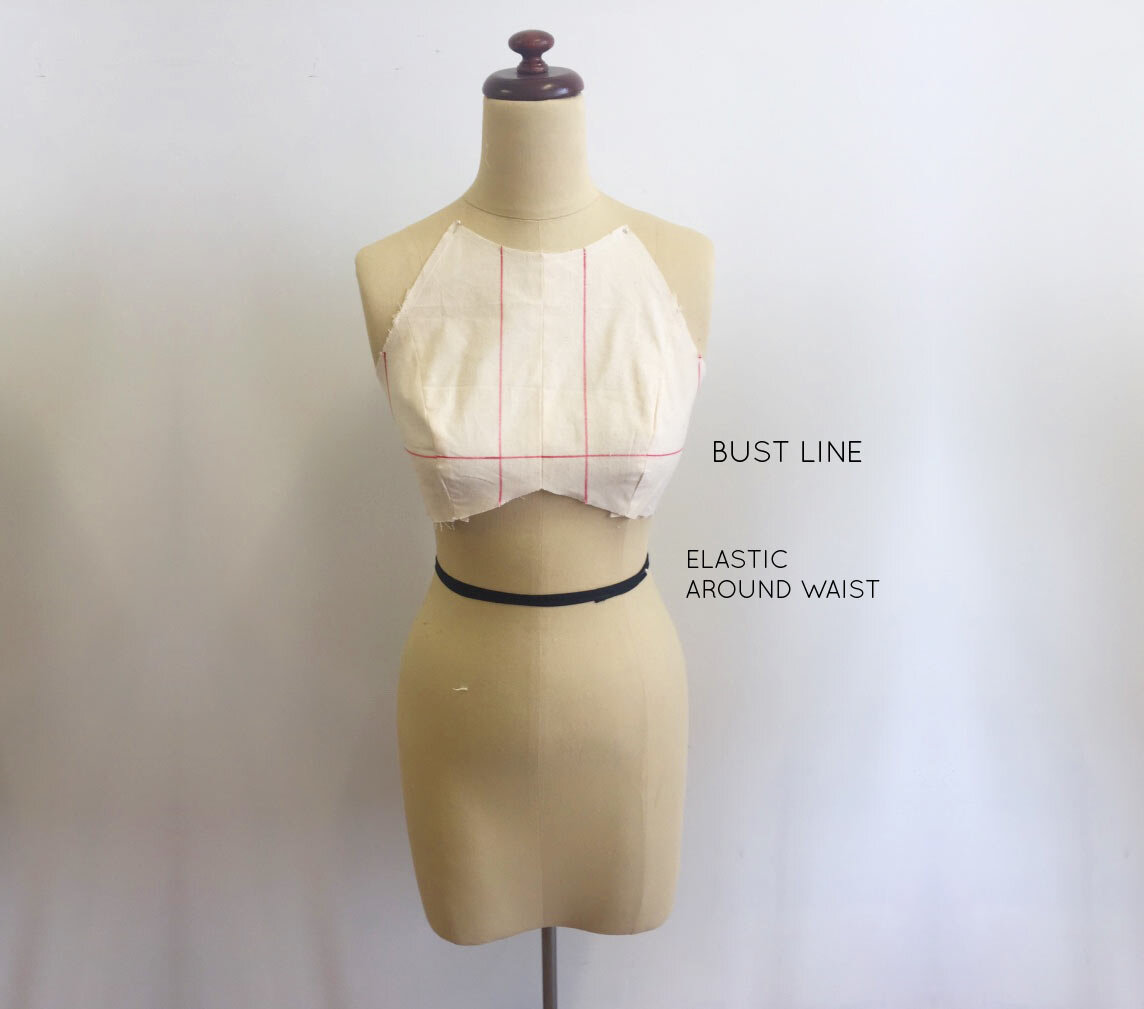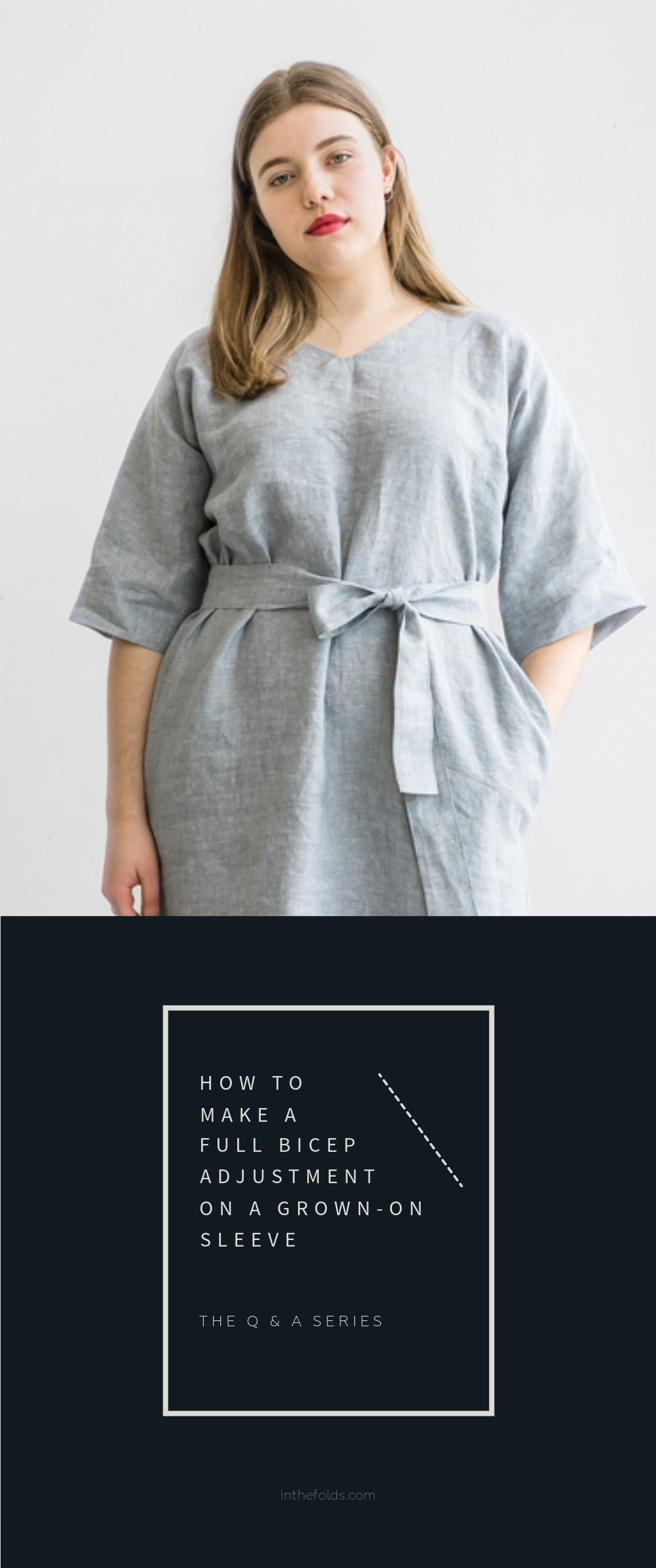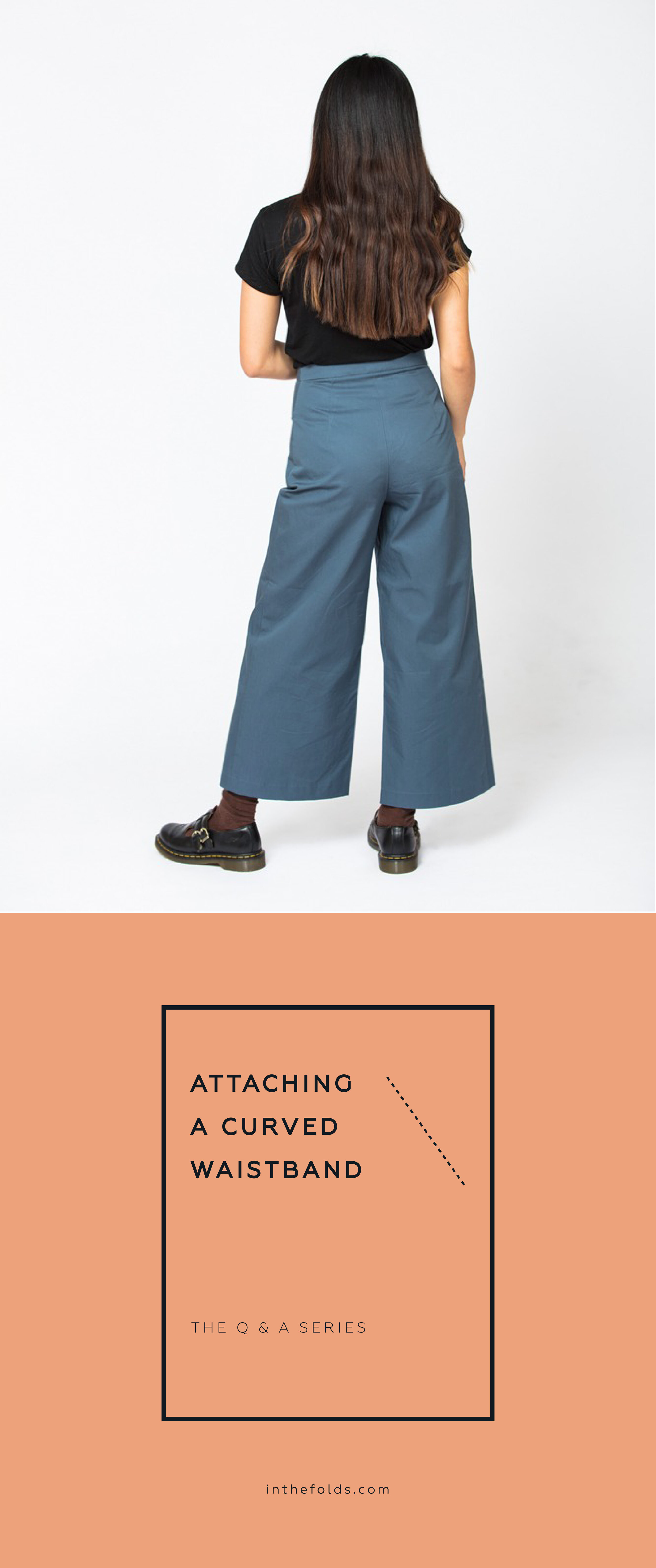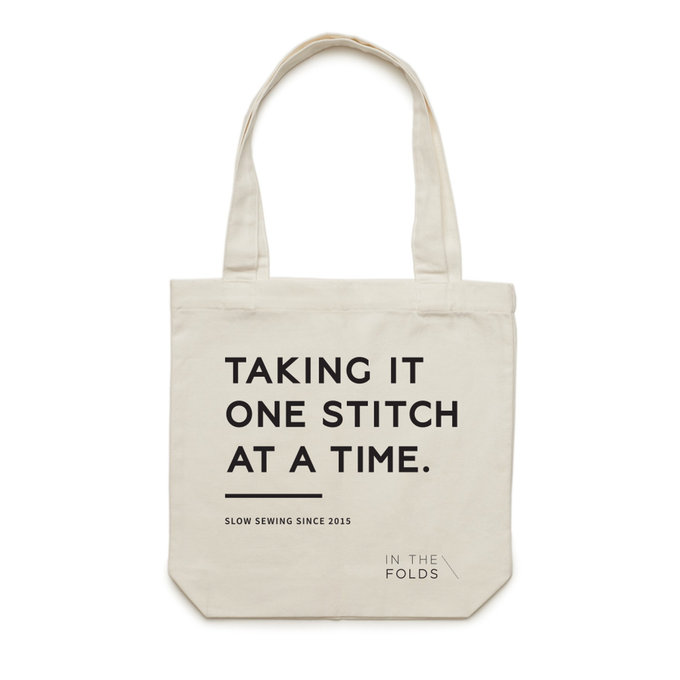THE Q & A SERIES - ATTACHING DOUBLE FOLD BIAS TAPE
Hi Emily,
Regardless if i use pre-made bias tape or make my own, I get so confused on how to apply and my garments don't look as neat as I'd like.
Can you please break down the steps to applying bias tape if A) you want the bias tape to SHOW ON THE RIGHT SIDE of your garment and B) you do not want your bias tape to show on the right side of your garment?
Thanks so much!
- RG
Portland, Oregon
Hi RG,
In last week's issue, I showed you how to sew single fold bias tape (which answers part B of your question - 'you do not want your bias tape to show on the right side of your garment') and today I will be showing you how to sew double fold bias tape.
In case you missed last week's issue, I will include the overview about bias binding again - so just skip through this part if you read Issue 8 of the Q & A series.
WHAT IS BIAS BINDING?
Bias binding is a strip of fabric cut on the bias (diagonal to the grainline / selvedge) that can be used in a variety of applications. By cutting the fabric on the bias, it gives the fabric a small amount of stretch, which makes it ideal for finishing curves and wrapping around seams (in the case of bias bound seams).
SINGLE FOLD & DOUBLE FOLD BIAS BINDING
In the photo above, the Collins top is inside out - showing the finish of the binding on the inside.
Single fold bias binding is the type of binding you will most often see in ready to wear fashion, as well as most sewing patterns that include a bound neckline or armholes.
This type of binding will give you a clean finish on the right side of the garment (you will just see a stitch line where the binding has been secured), and on the inside of the garment you will be able to see the bias strip neatly finished and stitched along the edge.
Double fold bias binding is what you will use if you want to see the bias binding on both the right side of the garment and the inside of the garment.
There is an extra fold put in the binding (which is what gives it the 'double fold' name) that is used to wrap around the edge of the garment, so it is visible on both sides.
This week's issue will show you how to apply double fold bias binding.
WHAT TYPE OF BINDING TO USE
You can make your own bias binding or purchase it by the metre / yard from a store. If making your own bias binding, I recommend using a lightweight cotton fabric such as cotton lawn or cotton shirting. You can also consider using a contrasting colour or print to add a fun pop of colour to the inside of your garment.
Depending on what instructions you are following, information changes slightly from person to person when it comes to the best way to cut your own binding as well as apply it. The instructions I am giving you today is the way I was taught at university and is the method I continue to use today. Like anything in sewing, find the techniques that work for you!
When choosing which bias binding to purchase / how wide to cut your own, consider how much bias binding you would like to see on the right side of the garment. Keep in mind, that it is easier to get a flatter finish when using narrow bias binding, rather than a wider option. Remember, due to the double fold, you will see half as much bias binding on each side of the garment as you would if you used the single fold method (if using the same width bias binding for each option).
For example, if using 12mm (1⁄2in) binding for the single fold method, your finished binding will be 12mm (1⁄2in) on the inside of your garment. If you were to use this same binding and apply it using the double fold method, you would see 6mm (1⁄4in) binding on the inside of the garment and the other 6mm (1⁄4in) would be seen on the outside of the garment.
For the case of the example, we will use 25mm (1in) bias binding. If purchasing binding, you will need to buy 25mm (1in) bias binding. If you are making it yourself, you will need to cut 4cm (1 1⁄2) strips from a square of fabric and then fold the bias binding with a bias tape maker or fold and press by hand. The reason for the difference in width between the home made and the store-bought is that when buying pre-made bias binding, the width on the label refers to the width of the exposed part of the binding (as this is what you will see when the binding has been sewn on the garment), rather than the width of the binding when it's pressed flat.
For more information on cutting your own binding, you can see this tutorial.
Applying bias binding to a neckline
I will guide you through binding a neckline, as this is one of the most common applications, and once you’ve nailed a neckline, you should be able to apply binding to any curve!
These instructions will guide you through applying double fold bias binding to the neckline of the Collins top. The Collins top has an opening in the back, so the binding does not need to be joined. For a neckline without an opening, you need to join the two ends of the binding (see this tutorial for more information on joining binding).
Please note: when you are applying double fold bias binding (so that the bias binding can be seen on both the right and wrong side of the garment), you will need to remove the seam allowance from the seam you are attaching it to - unless the pattern was designed to have double fold bis binding applied (in which case the seam allowance will have already been removed). In the case of the Collins top, you will need to remove the 1cm (3⁄8in) seam allowance.
Using a tape measure, measure around the neckline of the top, starting from the centre back on one side, and continuing around the neckline until you reach the centre back on the other side of the back opening.
a Cut a piece of bias binding about 4cm (1⅝in) longer than your neck measurement (the neck of the top).
b If you have made your own binding, fold the binding in half with wrong sides together. (If you are using store-bought binding, the binding will already have the folds made in steps b - d).
c Unfold the binding (the crease is there to guide the next folds).
d Fold the outside edges towards the centre fold created in STEP b. Press.
e Unfold the binding for the time being (the creases will help you apply the binding). In the case of the Collins top, fold back the short ends by 2cm (3/4in).
With the top inside out, pin the binding to the neckline (right side of binding pinned to wrong side of top). In the case of the Collins top, you need to have the short ends of the binding folded back at the centre back opening.
Start at one side of the centre back opening and line up the folded edge of the binding with the folded edge of the back opening. The centre back seam allowances of the top need to be folded inside the top.
Work your way around the neckline (being careful not to stretch the neckline or the binding) until you get to the other side.
Stitch the binding in place with a 1cm (3⁄8in) seam allowance (you can stitch along the first crease line). Check that all seam allowances are still pressed in the right direction.
If your fabric is thick or bulky, consider trimming / grading down the seam allowance around the neckline by 6mm (1⁄4in). If working on a curve Like this neckline), you can also clip into the curve (this will help the binding sit nice and flat).
Turn the top right side out. Wrap the bias binding around the raw edge of the neckline, bringing half of the bias binding to the outside of the top - use the creases created earlier to assist you. Adjust the binding, so that the fold just covers the stitch line underneath. Press and pin the bias binding in place.
To secure the bias binding, carefully edgestitch close to the fold with the right side of the top facing up.
Give the neckline a good press from both the right and wrong side of the top.
I hope that demystified the process of applying double fold bias and taught you are new finishing technique to have under your belt!
Happy sewing!
Emily
RESOURCES MENTIONED IN THIS ISSUE
Issue 8 of the Q & A series can be found here.
How to make your own bias binding (the low tech way) tutorial. Blog post can be found here.
Collins top sewing pattern. Pattern can be found here.
How to join bias binding - How to finish an armhole with bias binding tutorial. Blog post can be found here.
The Rushcutter dress sewing pattern. Pattern can be found here.
P.S. Would you like to know what the Q & A series is all about? This page tells you a little bit more about the motive behind the series.
Don't have a question, but found this newsletter helpful? I'd love to hear from you! Get in touch and say hi.

